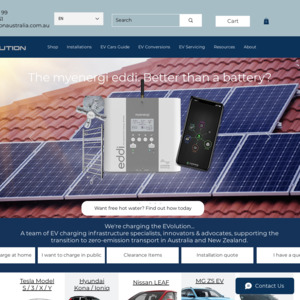The myEnergi Zappi is one of the first, and still most popular, solar-aware home EV chargers available.
Ships nationwide - shipping cost not included.
Installation not included. Can be installed by any qualified electrician.
From the Vendor:
The Best Value Zappi Yet
For a limited time only, we're offering the untethered 7kW Zappi V2 + Hub for only $1299 inc GST.
*only while stocks last.
The smartest way to drive on sunshine.
Perfect for all EVs. Simply pair with a public charging cable and download the myenergi app.
At our best price ever, how can you say no?


Good for charging your car overnight…